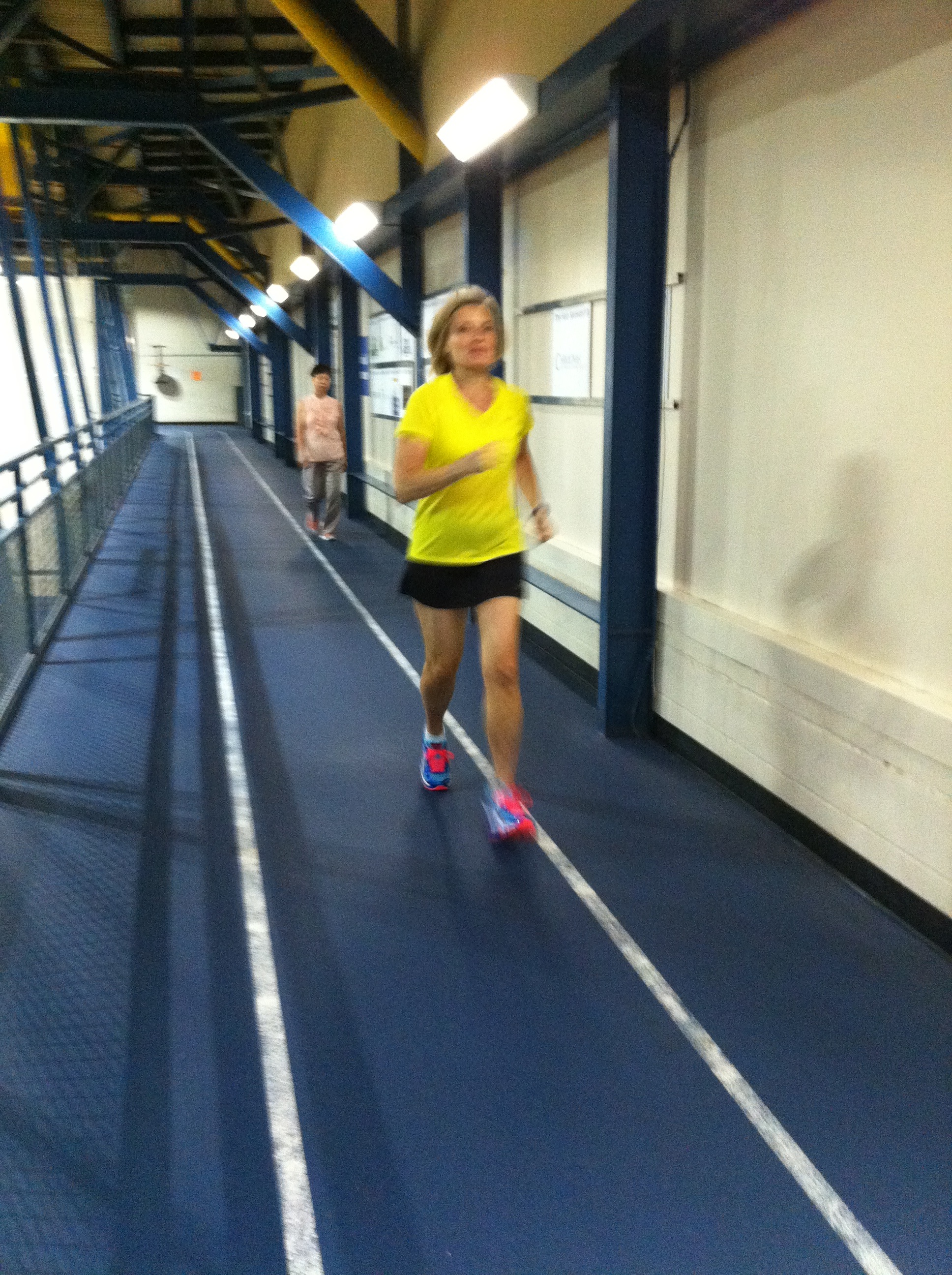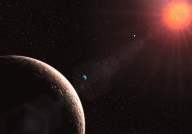I’m past the halfway point of the two-week rehab period prescribed by my sports medicine doctor, and I’m ready to get back on the road for Taylor. I don’t have any swelling in my sprained ankle, and the pain is much better this week than last. I’ve practiced the art of icing with a frozen cup of water; I kick off my shoes to do this at the office at least once a day, so I’m grateful for understanding coworkers. Barring any new setbacks, I should be back in a blindfold by sometime next week, just in time for the three-month countdown to Thunder Road.
 Meanwhile, my mom’s carrying the torch for both of us. I thought I’d be able to publish a new post for each of her training sessions, but I’d never sleep. By my count, Mom’s made it to the track or the treadmill three times since her coach went down last week. She even went to Run For Your Life and bought new running shoes! Last night, I joined her at the Y near our house and lifted weights while she ran laps. Once, I crept to the corner of the stretching area with my phone and hid behind a weight machine until she came down the straightaway. I jumped out just in time to capture a photo of her. Mom didn’t stop, but the next time she came around, she tried to sneak a peek at my camera roll and get me to agree to approval rights.
Meanwhile, my mom’s carrying the torch for both of us. I thought I’d be able to publish a new post for each of her training sessions, but I’d never sleep. By my count, Mom’s made it to the track or the treadmill three times since her coach went down last week. She even went to Run For Your Life and bought new running shoes! Last night, I joined her at the Y near our house and lifted weights while she ran laps. Once, I crept to the corner of the stretching area with my phone and hid behind a weight machine until she came down the straightaway. I jumped out just in time to capture a photo of her. Mom didn’t stop, but the next time she came around, she tried to sneak a peek at my camera roll and get me to agree to approval rights.
Mom will be ready for Nov. 16, and so will I. You can join us and help save kids like Taylor. Just visit the Thunder Road website to sign up for the 5K, half marathon or marathon. If you run for the Taylor’s Tale team (available in the list of groups/teams), we’ll provide a moisture-wicking shirt and a fun post-race get-together. More details to come! In the meantime, please consider supporting our cause with a donation (see how below). All gifts are 100 percent tax-deductible and will support gene therapy at the University of North Carolina.
See you on the road…soon!
I will run the Thunder Road Half Marathon blindfolded to support gene therapy co-funded by Taylor’s Tale at the University of North Carolina Gene Therapy Center. Donations to this cause are 100 percent tax-deductible. To support my run and our fight to develop treatments for Batten disease and other genetic diseases, click here.
Join the Taylor’s Tale team at Thunder Road! Click here to register for the marathon, half marathon or 5K. On the second page of registration, under “Event Groups/Teams,” select “Taylor’s Tale” from the list under “Choose an Existing Group.” Run for us to help raise awareness on race day. Stay tuned for more details, including special shirts for team members and an informal post-race event!

